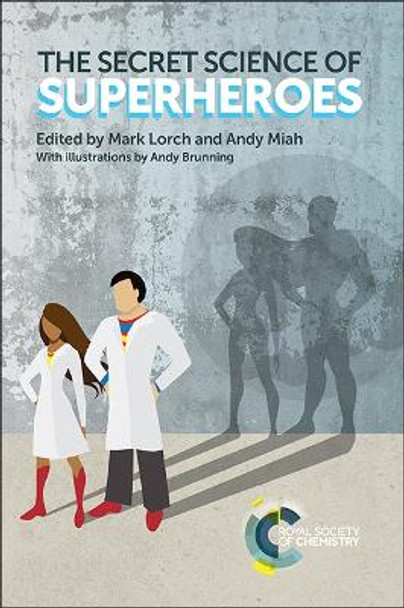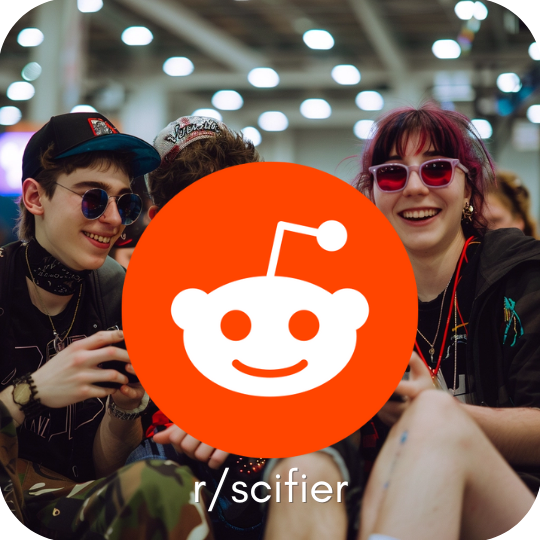Description
Reviews
Cover-to-cover, the book is short and sweet, an experience populated with quintessential superheroes and comic history (the authors' knowledge is impressive). It introduces a wide range of topics that can captivate a diverse range of readers - from those with general science knowledge to comic book and film enthusiasts. What I enjoyed most about this book was how well it made difficult concepts understandable. -- Cam Meze * Nature Reviews Chemistry, Volume 1, 2017, Article Number 0089 * I found this book very inspirational - I do not think that there are many books that join fundamental science and popular fiction in such an engaging way! [A]n illustration of the fact that serious subjects can be explained in a fascinatingly clear way to which broader audience can easily relate. -- Darja Lavogina * Darja Lavogina * The secret science of superheroes is fun, engaging and suitable for superhero fans of any level. -- Aurora Walshe * Chemistry World, December 2017 * The Secret Science of Superheroes is quite possibly the best book I have read that uses science fiction as a vehicle for science fact. -- Michael Follows * Physics World, November 2017 * Much like superheroes, scientists tend to assemble...at conferences or science festivals. At one such event, the 2016 Manchester Science Festival to be precise, a team of like-minded scientists came together to try to suss out the real-world science behind everything from Wonder Woman's lasso to the Hulk's gigantic transformation. The result is The Secret Science of Superheroes - an eclectic collection of essays by 15 scientists and science communicators, edited by Mark Lorch and Andy Miah. While not explicitly a sequel to James Kakalios's The Physics of Superheroes, this book is greater than the sum of its parts and fills many of the gaps when it comes to other sciences including biology and chemistry. It is clear from the preface that the book does not aim to debunk the science (which is easy) - instead, it considers how science might make the superheroes plausible. Each section is concise and faster-paced than similar books, as the authors each had to fit their contributions into 15 or so pages. Laced with gentle humour, every chapter ends with a list of references for the interested reader. In biology, the book covers key issues such as evolution, epidemiology and cancer. Louise Gentle, from Nottingham Trent University, writes about the evolution of superpowers but starts with an excellent explanation of natural selection, before suggesting that X-Men mutants could originate from a founder population. Embryos develop structures reminiscent of gills, a testament to life evolving in the oceans. It is conceivable that an environmental trigger might lead to the expression of this ancestral characteristic and the appearance of Aquaman. Gentle shows that many living creatures possess the superpowers claimed by our superheroes and this refrain echoes throughout the book. For example, shape-shifting comes as naturally to the mimic octopus (Thaumoctopus mimicus) as X-Men's Mystique. By using muscular hydrostatics to squeeze through an aperture the size of a pound coin, a 273 kg octopus outdoes Elastigirl. Although she can stretch any part of her body by 30 m, Elastigirl gets undone by the effect of turning forces - the further she stretches, the smaller the force she can apply - one of the few places in the book where we are confronted with the limits of superheroes. To a greater or lesser extent, all of the writers strayed from their superhero brief. For example, Isabel Pires, a life scientist at the University of Hull, uses the Hulk as a metaphor for how cancers develop. Paul Coxon, a materials scientist at the University of Cambridge, talks about lithium, though he cleverly weaves it into the superhero world by suggesting that we should not overlook the super elements we already have at our disposal. Felicity Heathcote-Marcz, at the University of Manchester, tells us that Wonder Woman's Lasso of Truth was most likely a comic-book manifestation of the lie-detector test. After all, William Moulton Marston, who dreamt up and wrote the first Wonder Woman comics, also developed the systolic blood pressure test, an integral part of the polygraph. Rob Miles, from the University of Hull's school of engineering and computer science, writes about big data, computers and artificial intelligence, but he starts by talking about Tony Stark's (aka Iron Man) home computing system "Jarvis" (Just A Rather Very Intelligent System). Miles then turns his back on superheroes, veering to "homicidal HAL" in Stanley Kubrick's 2001: a Space Odyssey, before going into the Turing test, personal assistants such as Apple's Siri, and even Isaac Asimov's Three Laws of Robotics. Miles closes by talking about recent, possibly state-sponsored, cyber-attacks and the dangers of big data. While Spider-Man is arguably the best superhero vehicle for explaining physics, the University of Surrey's Suze Kundu makes a persuasive case for using Batman and his costume to showcase composite materials. Kevlar would be a good choice for his suit, as it is bulletproof. This is because it spreads the force of an impact over a wide area, and this effect could be enhanced by incorporating a non-Newtonian material such as D3O. Already used in beanie hats worn by snowboarders, it stiffens on impact, turning the hat into a crash helmet and deforms slightly to absorb kinetic energy. Weaving in carbon nanotubes would enhance its tensile strength and provide a figure-hugging Faraday cage. Carbon is a conductor so Batman would be insulated from electric shocks, while heat would be channelled along the tubes. His cape could be made from "memory cloth" and the desired shape could be activated by an electrical current. If it were made of something like Nitinol, it could pop back into shape. Shape-memory materials are already in use as arterial stents and underwiring for bras. Of course, all these superheroes really need crumple zones or an airbag to avoid injury but this would compromise the visual spectacle and we are prepared to suspend disbelief for the sake of the story. Meanwhile, scientists are developing supersuits for soldiers and people with disabilities, inspired by science fiction. Brian Mackenwells, of the Wellcome Trust Centre for Human Genetics, tries to trip up the Flash, who can run at a maximum speed of 140,000 mph (or just shy of 63 km/s) - an ideal pretext to talk about the physics of re-entry from space. Mackenwells uses the "isentropic gas equation" to work out that the temperature of someone running at Mach 182 would rise by 3.4 million DegreesC. Three strategies are used for space re-entry vehicles to minimize heating: ablation, where some material absorbs thermal energy and changes state; emission, where thermal energy is absorbed and then emitted as electromagnetic radiation; or using heat sink material with a high specific heat capacity, which is the only option open to the Flash. Mackenwells works out the Flash's specific heat capacity to be around 7 billion J kg-1 K-1, making him an amazing human heat-sink. Very few typographical errors sneaked in, though the book could have benefited from a few tables of data rather than some of the infographics used. Despite these small niggles, The Secret Science of Superheroes is quite possibly the best book I have read that uses science fiction as a vehicle for science fact. -- Michael Follows * Physics World * The secret science of superheroes is a collection of scientific essays that were written by a team of science writers over a single weekend, then compiled and edited by Mark Lorch and Andy Miah. While there are plenty of equations, diagrams and mind-bending concepts, it's definitely not a textbook. It's far too silly to be a textbook. In fact, there is a wonderful juxtaposition in using well-considered logical scientific arguments to explain the (often ridiculous) comic book world by, for example, predicting and understanding the physical properties of Captain America's vibranium shield or asking how easy it would be for Elastigirl to give birth. What I loved about this book was the fact that each chapter was independent and unique, and each had a different approach - which makes sense as each chapter is written by a different author talking about their own favourite subject in their own way. The secret science of superheroes addresses all of those niggling inconsistencies that hardcore nerds have grumbled about during movie marathons, but it also breaks the science down in a fun and easy-to-read way for the comic book novice. I honestly think this book would appeal to anyone, regardless of their scientific education. Let's face it, is there really a better way to learn about epidemiology than by choosing which virus would best enslave humanity? The secret science of superheroes is fun, engaging and suitable for superhero fans of any level. Not to mention a great way to learn how to laugh like an evil genius. -- AURORA WALSHE * Chemistry World * In worlds where superheroes exist, I often imagine how such powers could be possible. These are worlds in which we often have to suspend belief. But what if we didn't? The authors - a banded `super' team of scientists - of The Secret Science of Superheroes aim to explore the many scientific principles underpinning the superpowers we marvel at. This book is composed of short, concise chapters that delve into individual superpowers and provide examples of comparable abilities exercised in the world we live in, whether they appear in nature or spawn from technology. The reader is challenged to consider what sort of nutritional intake Spider-Man would need to kickstart his crime-fighting day, or how the ins and outs of Batman's suit allow him to keep Gotham City safe. Cover-to-cover, the book is short and sweet, an experience populated with quintessential superheroes and comic history (the authors' knowledge is impressive). It introduces a wide range of topics that can captivate a diverse range of readers - from those with general science knowledge to comic book and film enthusiasts. Each chapter is structured similarly and is accompanied by educational illustrations by Andy Brunning, providing the perfect blend of entertaining and informative material with plenty of references for the reader to peruse should he or she want to explore the science a little more. The sheer diversity of the content means that not all chapters may appeal to you. However, I would dissuade against skipping them. On first glance of the contents page, I had an opinion on what chapters I thought I would enjoy the most. How wrong I was; do not judge a chapter by its title. A highlight of the book included an exploration into how Wonder Woman's Lasso of Truth could be made from aramid rope - a type of material made from Kevlar - with an absorbent layer that allows a truth serum drug, such as sodium pentothal, to permeate the skin of the captive. What I enjoyed most about this book was how well it made difficult concepts understandable. For example, one chapter focuses on the Hulk and his transformation from Bruce Banner as a model to explain the biological processes of cancer. These types of discussions - based on our present understanding of disciplines such as genetics, materials science and physics, among others - could inspire those interested in comic books and films to take up the study of science. Superheroes such as Batman and Iron Man were my exposure and gateway into science; these characters made science cool, and this is exactly what this book does. It is hard to read this book and not wonder what ability I would want. I often overlook the adverse effects and the dark side of power. This book explores these trade-offs and made me rethink what power I would want - remember, with great power comes great responsibility. Those with a keener hawkeye will notice a few mistakes, but these can be forgiven. After all, the authors embraced the power of The Flash and wrote this book in just 36 hours. This book does what it sets out to do: it introduces a wide range of scientific concepts in a fun, light-hearted and understandable tone. Occasionally, we have to accept that, sometimes, superpowers are just magic. However, the world as we know it may be working towards `super', with advancements in technology and the development of military supersuits, memory materials and programmable polymers. As one of the authors states, "The science behind superheroes is not entirely outside the realms of the physical possibilities that operate within our world." Science is a marvellous field that might just make the impossible possible. -- Cam Meze * NATURE REVIEWS | CHEMISTRY *
Book Information
ISBN 9781782624875
Author Mark Lorch
Format Paperback
Page Count 227
Imprint Royal Society of Chemistry
Publisher Royal Society of Chemistry
Weight(grams) 374g
Details
Imprint: |
Royal Society of Chemistry |










